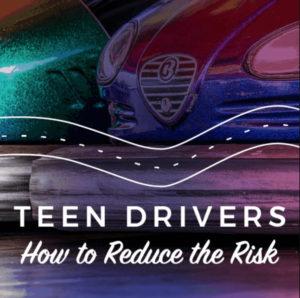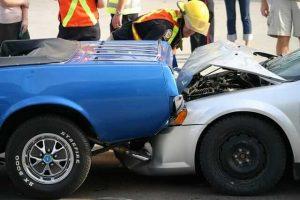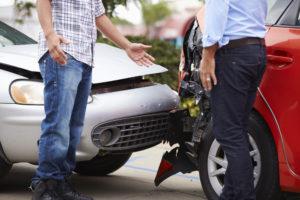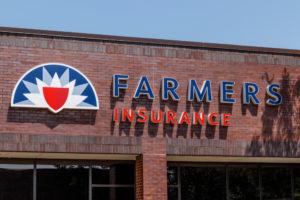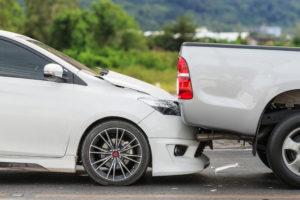
It may not be who you think. For example, conventional wisdom says that a driver who rear-ends another driver is at fault. Nevertheless, Louisiana law states that the presumption of guilt can be overcome under certain circumstances.
The Louisiana Supreme Court recognizes that in a rear-end collision, the motorist who is following is presumed to have breached his duty, so he bears the burden of proving that he was not negligent. Therefore, while the driver who rear-ended another car is presumed to be at fault, the court has opened a window so that it is possible to overcome that presumption.
No-Fault and Comparative Fault Laws
To know who exactly is at fault for your rear-end collision, you’ll first need to understand how no-fault and comparative fault laws work. Comparative fault laws exist in almost all states and allow car accident victims to recover financial compensation at the expense of the negligent party’s insurance company.
No-fault laws mean that car accident victims have to seek a settlement from their own insurance company, regardless of who was at fault. However, this is less common as only a handful of states still have no-fault rules in effect.
If you live in a no-fault state, you can still file a claim against the at-fault party. There’s just a lot of qualifications you have to go through first to do so. If you file a claim in a comparative fault state like Louisiana, you will need to prove negligence and ensure that you are less than 50% responsible for your accident to file a claim.
For a free legal consultation, call 800-537-8185
The Reasonable Driver Assumption
La. Stat. Ann. § 32:81(A) provides: “The driver of a motor vehicle shall not follow another vehicle more closely than is reasonable and prudent, having due regard for the speed of such vehicle and the traffic upon and the condition of the highway.”
In other words, the driver who rear-ended another car cannot just assume the car in front is being driven with care. Instead, they must show that they had maintained an appropriate speed and distance from the vehicle in front of them under the circumstances. The word “circumstances” is key here.
A court may determine an appropriate distance from the car in front can vary significantly depending on weather, road conditions, and the types of vehicles involved. The short answer is that a driver should be reasonably cautious and set a distance that would allow them to avoid a collision.
Louisiana’s Sudden Emergency Doctrine
Louisiana, along with many other states, has something called the “sudden emergency doctrine.” The doctrine says, “that a following motorist will be adjudged free from fault if the following motorist is suddenly confronted with an unanticipated hazard created by a forward vehicle, which could not be reasonably avoided, unless the emergency is brought about by his own negligence.”
There are two requirements: first, that the hazard was “unanticipated” and second, that the forward vehicle “could not reasonably be avoided.” Going back to our original scenario, if the driver in front of you suddenly slams on their brakes, that would most likely meet the “unanticipated” part, but you would also have to prove that you could not “reasonably” avoid hitting the car in front of you.
Click to contact our personal injury lawyers today
The Circumstances Matter
Again, circumstances matter. On a busy interstate, if the person in front of you suddenly slams on their brakes, there’s a good chance there may be no place to go to avoid a collision. In summary, facts, circumstances, and case law can all play a role in determining fault, and something as simple as a rear-end collision can be far more complicated than it seems.
How Can I Prove Fault for My Rear-End Collision?
You can prove fault for your rear-end collision by gathering evidence that shows exactly how the accident happened. Evidence you can use includes:
- Witness testimony
- Statements from accident reconstruction experts
- Any dashcam or surveillance footage showing the accident
- Photographs of the accident and your injuries
- Medical records, police reports, and other official documentation of the accident
The more evidence you have supporting the claim in your favor, the better. If you don’t need immediate medical attention after your accident, it’s best to try and collect as much evidence as possible to establish who was at fault.
Do I Need to Hire a Lawyer to Help Me?
There’s no legal requirement to hire a lawyer. However, if you choose to fight and prove fault on your own, you may have an extremely challenging time. Insurance companies will never settle for the maximum amount unless you negotiate successfully against them.
Establishing fault against an insurance company with lots of legal resources backing them can feel impossible. However, if you retain legal counsel from one of our experienced rear-end collision lawyers, you significantly increase the chances of winning a fair settlement that covers your damages.
Rear-End Collisions Are Common
The facts about rear-end collisions show that they make up roughly 29% of all motor vehicle accidents throughout the nation. Unfortunately, many people wrongfully assume that just because these collisions are more common, they aren’t as serious as others. The unfortunate truth is that rear-end collisions can cause severe injuries and damages.
Recent statistics on highway safety show that roughly 7% of all traffic fatalities on the road resulted from rear-end collisions. If you or a loved one suffered from a rear-end collision, don’t let the negligent party get away with their actions. You should always file a claim to recover compensation.
Get Help from a Rear-End Collision Lawyer Today
Contact a personal injury lawyer from Morris Bart, LLC if you got injured due to another driver’s negligence. We can evaluate your case, gather evidence, structure your claim and handle settlement negotiations on your behalf. Contact us to schedule a consultation and discuss your legal options. We are available 24/7 online or over the phone.
Questions?Call 800-537-8185
to find a Morris Bart office near you.


